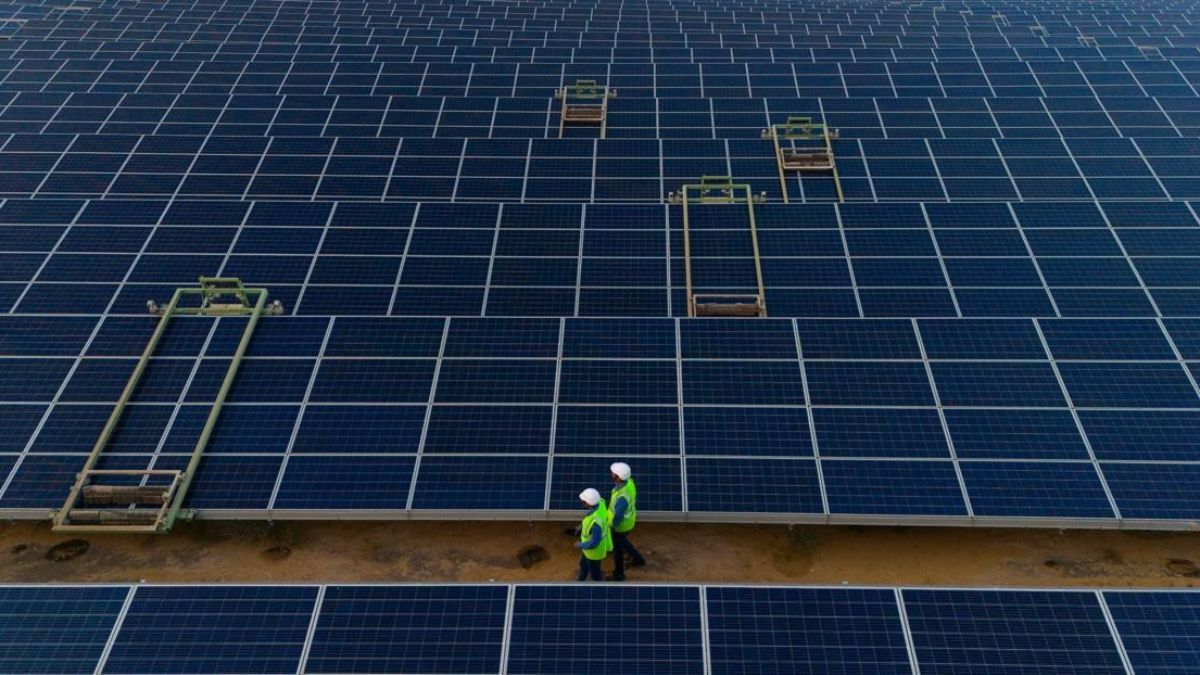Adani Mundra Cluster Set to Lead Green Hydrogen Revolution in South Asia
The Adani Mundra cluster comprises companies including Adani Enterprises Limited, Adani Ports and Special Economic Zones Limited (APSEZ), and Ambuja Cements Limited. Through this initiative, the Adani Group is focusing on economic growth, job creation, and a significant reduction in carbon emissions by 2050

Advertisement
Ahmedabad : The Adani Mundra cluster is emerging as a major player in South Asia’s green hydrogen sector, leveraging Gujarat’s renewable energy potential. The initiative, formed by key entities within the Adani Group, aims to transform Mundra into a leading global hub for green energy production. As part of this vision, the Adani Mundra cluster has joined the World Economic Forum’s ‘Transitioning Industrial Clusters’ initiative, showcasing the group’s commitment to sustainable growth and clean energy.
The Adani Mundra cluster comprises companies including Adani Enterprises Limited, Adani Ports and Special Economic Zones Limited (APSEZ), and Ambuja Cements Limited. Through this initiative, the Adani Group is focusing on economic growth, job creation, and a significant reduction in carbon emissions by 2050. Since 1993, Mundra’s port business has grown into India’s largest port and an industrial cluster supporting sectors such as solar module and wind turbine manufacturing and cement production. The new green energy focus builds on this established industrial base, aiming to make Mundra a leader in the production of green hydrogen.
Ambitious Targets for Green Hydrogen Production
The Adani Mundra cluster is set to produce one million metric tons of green hydrogen annually by 2030. With plans to triple this output to three million metric tons by 2040, the cluster is poised to play a critical role in India’s green energy journey. The production of green hydrogen will be supported by robust infrastructure related to solar and wind energy, as well as advanced electrolyzer manufacturing capabilities, further establishing the cluster’s leadership in the sector.
Karan Adani, Director of Ambuja Cements and APSEZ, shared his vision for the project: “The Adani Mundra cluster aspires to be an integrated green hydrogen production hub, which will help drive decarbonization of sectors of the Indian economy that are difficult to decarbonize. It will also reduce the country’s dependence on energy imports.”
Commitment to Renewable Energy and Sustainability
One of the key goals of the Adani Group’s green initiative is to decarbonize various sectors of the Indian economy, including those that are traditionally challenging to make environmentally friendly. APSEZ has pledged to power all its port operations with renewable electricity by 2025, aiming to improve performance in renewable energy and achieve net-zero emissions by 2040. In addition, the group plans to make Adani Cement the lowest emission-intensive cement unit globally, underscoring its commitment to sustainable industrial practices.
The cluster will not only focus on producing green hydrogen but also extend its manufacturing capabilities to include green hydrogen derivatives, which are essential for a broader green energy transition. By integrating production, infrastructure, and industrial applications, the Adani Mundra cluster aims to set a new benchmark in the global green hydrogen market.
Green Energy Hub for the Future
The formation of the Adani Mundra cluster is a strategic step by the Adani Group to position India as a leader in the global green energy transition. With its ambitious targets and comprehensive infrastructure, the cluster is expected to support India’s energy needs while reducing carbon emissions and promoting sustainability. The initiative aligns with global efforts to combat climate change and sets a precedent for other industrial clusters to follow suit.
Advertisement

